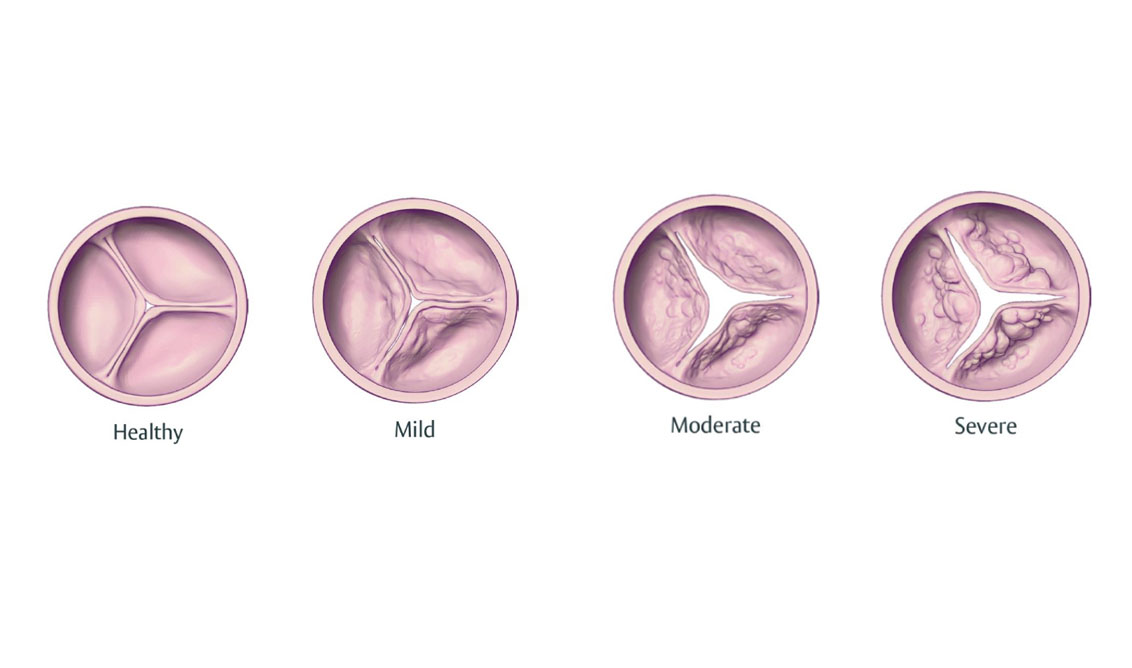Aortic Stenosis & Treatment Options

What Is Aortic Stenosis
Aortic Stenosis & Treatment Options-The heart’s main function is to pump blood to the rest of your body. The heart contains four valves. Each valve usually has two or three flaps of tissue called leaflets that open and close like gates to control the flow of blood through your heart. Aortic stenosis is a build-up of calcium on the aortic valve leaflets, which causes the leaflets to become stiff over time. This build-up reduces their ability to fully open and close, decreasing blood flow to the rest of your body. Aortic stenosis is a progressive disease, which means it gets worse over time. It’s typically measured as mild, moderate, or severe aortic stenosis.
Valve Progression
Aortic stenosis is a build-up of calcium on the aortic valve leaflets, which causes the leaflets to become stiff over time. This build-up reduces their ability to fully open and close, decreasing blood flow to the rest of your body. Aortic stenosis is a progressive disease, which means it gets worse over time. It’s typically measured as mild, moderate, or severe aortic stenosis.
Aortic Stenosis Symptoms
As a result of the reduced blood flow, the body does not get the oxygen it needs, which may cause symptoms. Patients who have severe aortic stenosis could experience a variety of symptoms including: shortness of breath, fatigue or feeling tired all the time, difficulty walking short distances or exercising, lightheadedness, dizziness or fainting, chest pain, swollen ankles and feet, rapid heartbeat. And sometimes, there are no outward symptoms at all.
Treatment Options
If you have been diagnosed with severe aortic stenosis and are experiencing symptoms, the disease can be life-threatening and can progress rapidly. Treatment for aortic stenosis depends on how far your disease has progressed. Mild aortic stenosis may be treated with medication. But severe aortic stenosis can only be treated by replacing the diseased valve.
Currently, there are two treatment options for patients who have been diagnosed with severe aortic stenosis: transcatheter aortic valve replacement (TAVR sometimes called TAVI) or surgical aortic valve replacement (SAVR or most commonly called open heart surgery).
TAVR is a less-invasive procedure than open heart surgery. The TAVR procedure uses a catheter which is most commonly inserted through a small incision in the leg to implant a new valve within your diseased aortic valve. For patients who have been diagnosed with severe aortic stenosis, TAVR may be an option depending on your risk for open heart surgery.
Surgical aortic valve replacement (most commonly called open heart surgery) is another option for treating severe aortic stenosis. Most open heart surgeries are performed through an incision across the full length of the chest where your diseased aortic valve is removed and a new valve is inserted.
Treatment Options (TAVR and SAVR)
Currently, there are two treatment options for patients who have been diagnosed with severe aortic stenosis: transcatheter aortic valve replacement (TAVR sometimes called TAVI) or surgical aortic valve replacement (SAVR or most commonly called open heart surgery).
TAVR Procedure
TAVR is a less-invasive procedure than open heart surgery. The TAVR procedure uses a catheter which is most commonly inserted through a small incision in the leg to implant a new valve within your diseased aortic valve. For patients who have been diagnosed with severe aortic stenosis, TAVR may be an option depending on your risk for open heart surgery.
SAVR Procedure
Surgical aortic valve replacement (most commonly called open heart surgery) is another option for treating severe aortic stenosis. Most open heart surgeries are performed through an incision across the full length of the chest where your diseased aortic valve is removed and a new valve is inserted.


